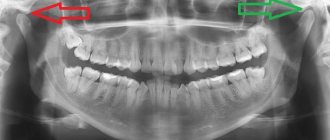Many people want to learn lucid dreaming and wonder where to start. Find out two easy and effective ways to become aware of yourself in a dream!
A lucid dream is when a person “wakes up” in a dream, realizes that it is a dream, and is able to control it. For a person, lucid dreams¹ are a storehouse of knowledge: through them he can reprogram himself², improve himself, receive information and simply enjoy - the sensations in dreams are absolutely real, and sometimes brighter than reality!
Below are two simple techniques that, if practiced regularly, will help you experience lucid dreams.
Lethargic sleep: what is it?
In a state of lethargy, a person does not react to light, noise, touch, or even pain. The pulse cannot be felt, although the heart is beating. True, with a very rare frequency - 2-3 beats per minute! Without a cardiograph, it is almost impossible to determine the number of heartbeats.
The patient's pupils do not shrink in bright light, the body temperature is lower than usual, and breathing is barely noticeable. In this situation, even experienced doctors mistakenly declare death. Diagnostic equipment shows minimal signs of life when connected to a person with lethargy.
A person does not wake up to eat, drink, or relieve himself. Physiological processes in the body are greatly inhibited.
Causes
The main cause of lethargic sleep is severe stress . For example, due to the death of a loved one, a traumatic situation, etc.
Frequent tantrums can also lead to lethargy. However, they are not the only factor in the development of pathology. This is usually a consequence of hysteria along with mental illness and brain damage.
Lethargic sleep often occurs with schizophrenia, bulimia (eating disorder), physical exhaustion, etc.
Infections contribute to the development of pathology. In particular, bacteria (diplococci) that cause sore throat can provoke lethargy. If the body cannot cope with pathogens, they penetrate the brain and affect those areas that are responsible for the onset of sleep.
Pharmacological agents that depress the nervous system and chemotherapy drugs increase the risk of lethargy. The likelihood of its development increases with uncontrolled use and overdose of such drugs.
Severe poisoning leading to brain damage is a prerequisite for the development of pathological sleep. The latter also results from exhaustion of the body due to illness or blood loss.
50% discounts on products for healthy sleep in the Askona online store
An extremely rare cause of the pathology is lethargic encephalitis. It is also known as Economo's disease or sleeping sickness. Scientists believe that the lethargy in this case is caused by an unknown virus that affects the midbrain. Because of this, the physiological processes responsible for maintaining wakefulness are disrupted. As a result, damage to this area of the brain causes a lethargic state. By the way, over the past 20 years, not a single case of lethargy caused by Economo's disease has been identified.
People who are easily suggestible may fall into a long sleep after a hypnosis session. However, a competent hypnotherapist will not allow this to happen.
There is a version that lethargy is inherited. Scientists have suggested the presence of a gene that provokes the development of the disease. If close relatives fell into a lethargic sleep, the likelihood of pathology becoming higher.
How does your sleep state affect the sensation of pain?
The transition from a state of wakefulness to a state of sleep is accompanied by deafferentation with an increase in the threshold of response to sound, tactile, and proprioceptive stimuli. Thalamocortical neurons that transmit sensory information to the corresponding somatotopic zones demonstrate a decrease in the impulse frequency with a transition to the burst mode and the formation of characteristic bursts of impulses with a frequency of 7–14 Hz, which limits the amount of transmitted information [9]. Modification of afferent information also occurs at the brainstem and spinal levels (suppression or prolongation of the latency of the nociceptive flexor reflex, extinction of the classic mental reflex).
In addition to the neuronal mechanism, several neurotransmitters and hormones play a role in changing the sensation of pain associated with sleep. The mediator orexin is a neuropeptide involved in the regulation of arousal, the sleep-wake cycle, appetite, the activity of the cardiovascular system, the formation of anxiety and pain modulation [12].
There are 2 types of orexins (orexin A and B) and 2 types of orexin receptors (OX1R and OX2R). Most of the evidence for the role of orexin in pain comes from animal experiments. It is hypothesized that the effects of orexin A on pain are greater than those of orexin B and that these neurotransmitters may regulate thermal, mechanical, and chemical antinociceptive effects at the spinal and supraspinal level. Orexin receptor agonists induce arousal and wakefulness, while antagonists induce sleep [12].
The pineal gland hormone melatonin, in addition to regulating circadian (circadian rhythms), is also involved in the regulation of pain. The antinociceptive effect of this hormone occurs at the level of the dorsal horns of the spinal cord, as well as through the activation of melatonin receptors (MT1 and MT2 receptors). In addition, melatonin suppresses free radical activity and interacts with various pain pathways, including the glutamatergic, GABAergic, opioid systems, and also affects the production of nitric oxide. The effectiveness of this substance has been demonstrated in clinical studies. Thus, in patients with fibromyalgia, taking melatonin helped reduce the severity of pain, daytime fatigue, improve sleep and quality of life [13].
Another link between sleep status and pain susceptibility is inflammation. Thus, one study showed that an increase in the secretion of cytokines is observed against the background of sleep deprivation (the secretion of IL-6 and IL-1β increases), and the value of the morning concentration of IL-6 was negatively associated with a deterioration in the quality of sleep in healthy adults [14] . In a meta-analysis by M. Irwin et al. (2016) also confirmed an increase in the concentration of inflammatory mediators (C-reactive protein, IL-6), which are pro-pain factors, against the background of limited sleep time [15]. Key aspects of the relationship between sleep and pain are presented in Figure 1.
Experimental observations
The relationship between sleep deprivation and pain reactions in humans was studied in the 1970s. in experimental studies by the group of H. Moldofsky. In these observations, reports from healthy subjects following sleep deprivation showed increases in levels of daytime musculoskeletal pain and fatigue comparable to symptoms observed in patients with chronic pain [16]. In a contemporary study modeling sleep restriction in daily life, N. Simpson et al. observed that exposure to chronic sleep deprivation increased the risks of spontaneous pain, vulnerability to chronic pain, and sensitization [17].
R. Edwards et al. (2008) showed that the dependence of the severity of pain on sleep duration takes on a U-shaped curve, where a high level of pain during the day is associated with less sleep the previous night [18].
In another study of healthy women who were sleep deprived by forced awakening, there was a significant decrease in pain inhibition and an increase in spontaneous pain. The authors concluded that not only a decrease in total sleep time, but also disruption of sleep continuity may impair the inhibitory function of endogenous pain modulation [19].
An important factor determining the analgesic effect of sleep deprivation was the role of expectations and placebo/nocebo effects during sleep. Studies have shown that induction of analgesic anticipation before sleep (i.e., anticipation of the alleviating effect of sleep) led to a decrease in nocturnal pain perception and subjective sleep disturbances due to the activation of brain processes that modulated incoming nociceptive signals [20]. Nocebo effects (expectations of higher levels of pain) may, conversely, increase sensitivity to electrically induced pain, but they do not explain the hyperalgesia associated with sleep restriction, since they appear to be mediated by different cortical mechanisms than during sleep restriction [21]. ].
The revealed dependence of pain on the quantity and quality of sleep suggests that an increase in total sleep time will lead to a decrease in pain. Indeed, this turned out to be true for periods of both night and daytime sleep. It has been shown that the pain-increasing effects of sleep deprivation can be reduced by short naps during the day [22]. According to T. Roehrs et al., artificially extending sleep time in humans by 2 hours over 4 days led to a decrease in sensitivity to pain along with a decrease in the level of daytime sleepiness [23].
Signs of lethargy
Outwardly, a person who has fallen into a lethargic sleep looks like someone who has died. The skin is pale, cold, the pupils do not constrict in bright light. There is almost no pulse, breathing is rare, and the sleeper does not respond to pain.
The patient, being in lethargy, does not eat, drink or relieve himself. Because of this, body weight is lost and the body becomes dehydrated.
“Mild” cases of lethargic sleep are similar to deep sleep. Breathing is normal, pulse is palpable. Diagnostic equipment shows changes in sleep phases, which is natural for a healthy person. In the fast phase, as in normal conditions, the eyeballs under the closed eyelids move in a lethargic sleep.
from other types of parasomnia in its duration and continuity. For example, with sleeping beauty syndrome, a person wakes up every 18-20 hours of sleep. Lethargic sleep can continue for months without interruption for awakening.
In a state of lethargy, a person is able to remember what is happening nearby. However, the patient is unable to respond to this. A person is actually locked in his body and cannot get out of it.
Lethargic sleep can occur several times throughout life. Moreover, the risk of pathology is higher in those people who have been in this state. If you compare a person with neuropsychiatric diseases and a healthy person who has already slept lethargically, the latter is much more likely to have a disorder.
Before the onset of lethargic sleep, patients felt increasing fatigue and dizziness. Then, literally on the move, consciousness turned off, and they fell into deep sleep. Signs of impending lethargy may include increased body temperature, profuse sweating, headaches, weakness in the legs, and irresistible drowsiness.
Basic Concepts
How does the outline of a dream differ from real events? Isn’t my entire existence in sleep and in reality part of something single? Having set out on the path of understanding oneself and the surrounding reality, a person begins to think about the nature of sleep and approaches the magical concept of a dream.
In the Toltec tradition, a dream is not just a mosaic of events and a series of images during rest - it is a way of understanding the Universe and traveling to other worlds. Here we come to the following basic concepts.
- Energy is the main driving force in the Universe. No energy - no life. The practice of dreaming will require a large amount of vitality from you. Familiarize yourself with techniques for conserving energy in your body in advance.
- Intention is the bright power of your desire , set before you as an unbending goal. By directing all your strength to achieve this goal, you can get tangible results.
- Attention is the most important quality that a practicing dreamer needs. So that with the help of intention you can retain and remember dream images, develop memory in real life. Useful in any case.
- True fortune telling
- Let's tell fortunes for free
- Prediction for love
- Psychic for free
Consequences of lethargic sleep
Awakening from lethargic sleep, as well as immersion in it, occurs spontaneously. Even the medical equipment to which the patient is connected does not help determine the time of recovery from this state.
Long sleep and prolonged stay in one position have a negative impact on health. The patient has bedsores, thinness, and a bluish tint to the skin. In addition, problems with the kidneys and lungs appear, and the functioning of blood vessels is disrupted.
Some people who slept for 10-20 years did not age during their sleep. Physiological processes slow down during lethargy. Accordingly, the aging mechanisms also stop.
The brain does not develop in a state of prolonged sleep. In other words, a person who fell asleep at the age of 20 and woke up at the age of 40 will think like a young man. If this happened to a child, then after a long lethargy, an adult-looking person will speak and think like a child.
By the way, such an incident occurred with one 6-year-old girl from South America. Having slept for about 17 years, an adult 23-year-old girl, at first after lethargy, was interested in dolls and other children's games.
Dream Map and Dream Diary
Dreamers discovered that each of us has unexplored internal spaces of consciousness , which can be roughly called a Personal City. recurring dreams throughout their lives , containing the same locations and plots.
Using their full attention, experienced dreamers have discovered that they can intentionally explore an area of their inner world and even make a map of locations and objects.
A noteworthy fact is that all the dreamers’ maps are surprisingly similar and, at a minimum, contain many of the same places. All of this reminds us of our common archetypes and close energetic connection as equal beings.
To better remember your dreams , it is recommended to keep a personal dream diary . It is better to write down each dream immediately after waking up, while your memory still records all the important details of what you saw.
The practice of lucid dreaming is a unique experience that will help you look at the world with different eyes and discover new facets of what is happening. Remember that a dream is not just entertainment and an attempt to diversify the world, but spiritual improvement , the ascent of the soul through the stages of knowledge. And the first question you should ask yourself is none other than “Who am I and what am I doing here?”
Diagnostics
From the outside, lethargic sleep is difficult to distinguish from death. To differentiate lethargy, specialists perform an EEG (electroencephalogram) and an ECG (electrocardiography) . Additionally, they take blood for analysis, examine the patient for serious injuries, and check for capillary bleeding.
EEG and ECG help determine whether the brain and heart are working. If the equipment detects a rare pulse and even minimal brain activity, there is every chance to believe that the patient is in a lethargic sleep. Symptoms of cold, pale skin and lack of reaction to light in the pupils confirm the diagnosis.
During lethargy, the brain can work in the same way as when a healthy person is awake. Other organs, such as the stomach, kidneys or lungs, barely function. Because of this, after a long hibernation, patients experience kidney failure, digestive difficulties, impaired respiratory function, etc.
To avoid health problems in people who have fallen into a lethargic sleep, their condition is maintained by life support devices. The same equipment is used in resuscitation measures.
Introduction
Sleep problems (difficulty initiating, maintaining, or insufficient quantity) are experienced by about 30% of the population in developed countries [1].
Insufficient sleep has been shown to be associated with impaired cognitive function and changes in emotional state [2]. It is also a risk factor for the development of cardiovascular diseases, dementia, obesity, diabetes mellitus, and depression, which ultimately leads to an increase in overall mortality [3, 4]. In the social aspect, sleep deficiency is accompanied by a significant decrease in labor productivity, leading to large significant direct and indirect costs (the phenomena of absenteeism and presenteeism) [5]. An association of sleep disorders with a high incidence of chronic pain syndromes has also been noted. For example, S. Ødegård et al. in a large (n=15,060) sample over 11 years of follow-up, they found that sleep disturbances increased the likelihood of headache by 1.4 times [6]. The same applies to back pain - in people with poor sleep, the likelihood of its occurrence also increases by 1.4 times [7].
Treatment
It is impossible to get out of lethargy even with the help of modern medical equipment and pharmacological agents.
The patient's condition must be monitored periodically. In addition, it is necessary to regularly administer food to the person parenterally (intravenously) or through an esophageal tube.
In most cases, the patient is not admitted to a medical facility. As a rule, the sleeping person is at home, where relatives take care of him: periodically wash him, warm him and turn him to avoid bedsores.
How to deal with nightmares and recurring dreams
Let's assume that you have the same nightmare almost every night, obviously based on psychological trauma. You can get rid of this with the help of lucid dreaming. To do this, choose a reference moment in the dream that you remember well. Play it regularly before going to bed and repeat that this is a dream. As soon as you fall asleep and find this moment, change the situation in your favor, bring the situation to a different conclusion that will calm your soul (psyche).
Fun fact: Depressed people dream more because they have longer periods of REM sleep.
Some more interesting statistics: per night we dream on average five dreams with an interval of an hour and a half. This is due to the alternation of cycles of rapid and slow sleep.
How long does lethargic sleep last?
Lethargic sleep can last from 1 hour to 20 years . There have been cases where people fell into lethargy for more than a couple of decades. During this time, the patients did not eat, drink or relieve themselves.
The sleeper usually cannot get out of this state on his own without the influence of external factors. For example, there was a case when a patient, through a dream, heard news of his own funeral and instantly woke up. Suddenly, only a few emerge from their lethargic sleep.
Buy an orthopedic sleep pillow on AliExpress. Prices from 1103 rubles
Feedback from practitioners
More and more people around the world are beginning to strive for a spiritual life and going beyond ordinary perception. A lot of books appeared on the bookshelves, describing in detail all kinds of experiences of new perception . This trend did not bypass Russia either.
At the turn of the millennium, a unique group called “Dream Hackers” was formed in our country. These people were able to jointly step into the world of the unknown and provide the public with interesting facts and instructions. Those interested can study this course in detail by discovering a book called “Ravenna Workshop”.
Cases of lethargic sleep from real life
One incident occurred in 1954 with Nadezhda Lebedina. As a result of a quarrel with her husband, the 34-year-old patient fell asleep for 20 years and woke up in 1974. Nadezhda woke up after she heard the conversations of her loved ones through her sleep. The cause of lethargic sleep in this situation was hysteria due to a conflict with her husband.
By the way, this incident was included in the Guinness Book of Records as the longest lethargic sleep. Yes, there were people who remained in such hibernation longer (22 years or more). However, the case of Nadezhda Lebedina was officially registered. Representatives of the book of records did not accept other longer cases of lethargic sleep.
There is a well-known example of another person - Ivan Kachalkin, who slept from 1898 to 1918. After waking up, Ivan said that during 20 years of sleep he was aware of what was happening around him. However, he could not wake up, as he felt insurmountable weakness. Before the incident, Ivan was diagnosed with schizophrenia, which became the cause of lethargy.
The case of Ivan Kachalkin was studied by the famous academician Pavlov, a man who studied conditioned and unconditioned reflexes in animals. The phrase “Pavlov’s dog” is associated precisely with this scientist.
The famous Italian poet Francesco Petrarca fell asleep for only 20 hours and was almost buried alive. According to the laws of that time, a person had to be buried within 24 hours after death. In addition, then no one knew what lethargic sleep was. If a person is pale, cold and does not respond to physical influence, then he has gone to another world. The Italian woke up right at the moment of his burial ceremony, which shocked eyewitnesses of the funeral and convinced them of the existence of God. After this, Francesco no longer fell into a lethargic sleep. He actually died in 1374, the day before his birthday.
Go to the ZdravCity website
Another case of lethargy occurred in Norway in 1919. After a difficult birth, Augustine Lingard fell asleep for 22 years and woke up in 1941 - at the height of the Second World War. The woman lost a lot of blood during childbirth and was physically exhausted. Apparently, in order to get out of a life-threatening state, the body went into a state of lethargy.
Throughout her sleep, the woman did not age and at the moment of awakening she looked as young as when she fell asleep. However, over the next year after the lethargy, the patient began to age rapidly. As a result, after just over a year, she already looked like her peers.
Another case known to the Internet occurred with Praskovya Kalinicheva in 1947. After a series of unpleasant events - the death of her husband, arrest and exile, the woman fell into a lethargic state. She was there for only a week. The reason for the development of lethargy in this story is accumulated stress.
detailed instructions
Dreamers all over the world have managed to collect and record a set of basic rules that will help even a beginner quickly induce his first lucid dream.
- Start conserving your strength.
- When you accumulate energy, create a powerful request-intention to become conscious in a dream.
- Try to clearly feel all the borderline states : the feeling of hunger, the state of fatigue and drowsiness, the moment immediately after waking up.
- The most important thing is the moment of falling asleep . Record what is happening around you and try to consciously observe how your consciousness sinks into slumber. Give yourself the command to look at your hands in a dream.
If you do everything in the proper sequence, then a lucid dream will not keep you waiting.
Modern cases of lethargic sleep
Italian Roberto De Simone emerged from his lethargy at his own funeral in 2003. The man was pronounced dead from a heart attack. However, in reality, heart problems led to lethargic sleep.
In 2011, a little-known Crimean rock band decided to rehearse a concert in a morgue. Unexpectedly, during the performance of the compositions, the artists heard a man’s scream coming from one of the refrigeration chambers. The victim was immediately released. Later it turned out that the supposedly deceased was sleeping in a lethargic sleep while he was in the morgue.
There is a version of another unexpected resurrection after a car accident. An unknown guy got into a serious accident. Doctors who arrived at the scene found no visible signs of life in the victim and certified death. The man was taken to the morgue, where he later woke up and walked out of the refrigeration chamber on his own.
Is it possible?
How to get into a lucid dream? Is it possible? Many people, after several unsuccessful attempts, become disappointed and come to the conclusion that either they were deceived and these are all fairy tales, or they do not have the ability to do this. Both of these are fundamentally wrong. First of all, everything written here is true! Secondly, there are no people who are unable to become aware of themselves in a dream. Some people succeed right away, others take weeks or even months, but in the end they are still successful. Maybe you won’t be able to build beautiful castles and raise golden dragons right away; it’s quite difficult. Everything will come in time if you don’t stop and go to the end! First you need to step over the main barrier - awareness. What are we going to do now? Are you willing to go down the rabbit hole? Ready? Then go ahead! We master the entrance to a lucid dream (LS).
What is the difference between coma and lethargic sleep?
To compare both conditions, we list the symptoms of each of them separately.
Signs of coma:
- The patient's condition is on the verge of death.
- The patient needs to be connected to life support devices. Otherwise he may die.
- Coma is preceded by traumatic brain injury and serious neurological diseases.
- A patient in a coma often cannot breathe on his own.
- Rehabilitation after a coma can take several months.
- In a coma, the patient may react to external factors.
- The person has a weak but stable pulse.
- In a comatose state, a person’s skin is warmer than during lethargic sleep.
Signs of lethargy:
- The cause is not associated with severe brain damage.
- Breathing is minimal but not impaired.
- The sleeper can do without equipment to support life.
- After lethargy, a person is rehabilitated faster than after a coma. Except in cases where internal organs have suffered from many years of sleep.
- The patient does not respond to external factors.
- The pulse cannot be felt.
As you can see, lethargic sleep is less dangerous than coma. In general, the difference between the conditions is in the causes of occurrence and the speed of rehabilitation after.
What can you do in a lucid dream?
OSes come in many different forms and many of them are completely tangible and vivid. This allows the human brain to regenerate completely different and even amazing things. This is due to the fact that everything happens in thoughts, where there are no boundaries. Thanks to numerous trainings, managing lucid dreams is possible, and if desired, it is easy to realize any of your fantasies and desires.
- Experiments have proven the ability to improve your physical performance thanks to the processing of skills in the OS.
- Visiting various places, as well as traveling through time.
- The dream of many people is to learn to fly, and in their dreams it can be made a reality.
- Gaining creative inspiration by bringing ideas to life.
- Many psychiatrists use lucid dreaming to help a person cope with nightmares.
- An opportunity to meet and communicate with people who have already passed away.
How to distinguish death from lethargic sleep
Without medical equipment, it is almost impossible to determine whether a person has died or is in a lethargic sleep. The main diagnostic method in this case is electroencephalography, a procedure that detects the presence of brain activity. If the latter is present along with symptoms such as pale skin and lack of pupil reaction to light, then the patient is in a state of lethargy.
The lethal outcome is confirmed by the following factors:
- 2 hours after death, cadaveric spots appear on the body.
- Rigor mortis occurs 4 hours after death. The person “freezes” in the position he was in before.
How to learn to order dreams
How can we learn to see the dreams we want to see? Sometimes we want to see loved ones in our dreams who are not nearby or we want to go to some place where we have never been. In this case, it is worth practicing a practice that helps to “order” dreams. You need to start small: before going to bed, try to think hard about the loved ones you want to see in your dreams. Why exactly relatives? Because you already have them in your subconscious and it will be easier to see them. When you become successful at this, make the task more difficult - think about some place where you want to go. The moment this starts to work out, program yourself to perform certain actions.
More on the topic: How to remember a dream you had today
Interesting Facts
Gogol's lethargic dream
There is a version that the author of “Viy” and “Dead Souls” Nikolai Vasilyevich Gogol was buried alive. It is alleged that the writer was prone to lethargic sleep. However, the fact of burial alive was not confirmed on the global network, including Wikipedia. Authoritative sources say this is just a myth.
The attitude of medicine to lethargy
Official medicine does not identify lethargic sleep as a separate disease. If pathology is present, specialists diagnose “malaise and fatigue.” This diagnosis refers to disorders that are not included in other categories of diseases. According to ICD-10 - International Classification of Diseases, 10th revision, lethargic sleep has code R.53.
Lethargy is more classified as a neurological disease. Therefore, a person who has fallen asleep for a long time should be observed by neurologists, psychotherapists or psychiatrists. If complications develop during sleep, doctors of other specialties are involved.
Lethargy in famous personalities
There is information that, in addition to Gogol, Marina Tsvetaeva, Alfred Nobel and composer Arthur Schopenhauer had a tendency towards lethargy.
Delayed burial and safety coffins
In the 18th century, German authorities prohibited burying people before 72 hours after their expected death. This measure made it possible to avoid cases of burial alive.
A century later, safe coffins were developed that could temporarily support human life underground. To do this, they provided ventilation with a tube going outside. Air flowed through it, and the screams of the buried person were also transmitted. Thanks to such tubes, cemetery caretakers would be able to recognize the grave of a person buried alive.
Documentary about lethargic sleep:
Lucid dreams through the eyes of esotericists
A person, entering the conscious state, leaves his own physical shell and enters the astral plane. Out-of-body travel, according to the beliefs of esotericists, is carried out for the purpose of spiritual enrichment and personal growth after contact with higher-order minds. Controlled sleep offers many benefits to the dedicated individual. According to the beliefs of occultists, mystics and esotericists, astral travel takes on the following pragmatic meaning:
- People who practice this direction improve their physical and spiritual essence.
- By making OS a normal process, individuals achieve complete control over their own body and the ability to control the subconscious.
A guarantee of return to the material world and the bodily shell is a high level of enlightenment, control of consciousness and management of the situation. Esotericists achieve perfection throughout their lives. The method is based on the ability to recognize esoteric symbols and competently manage intuitive sensations.









